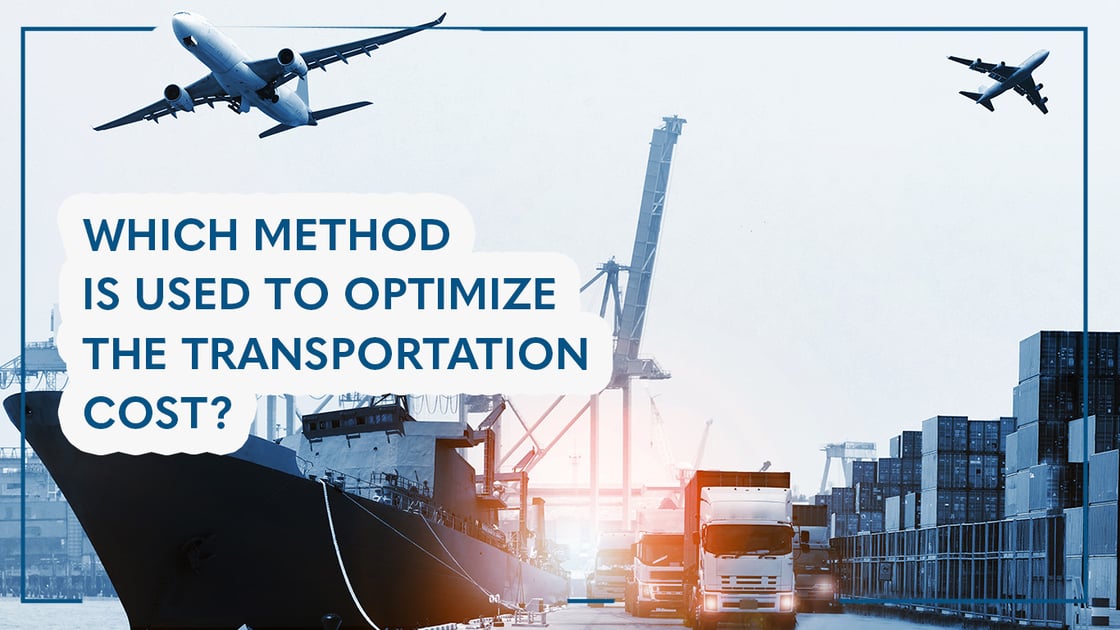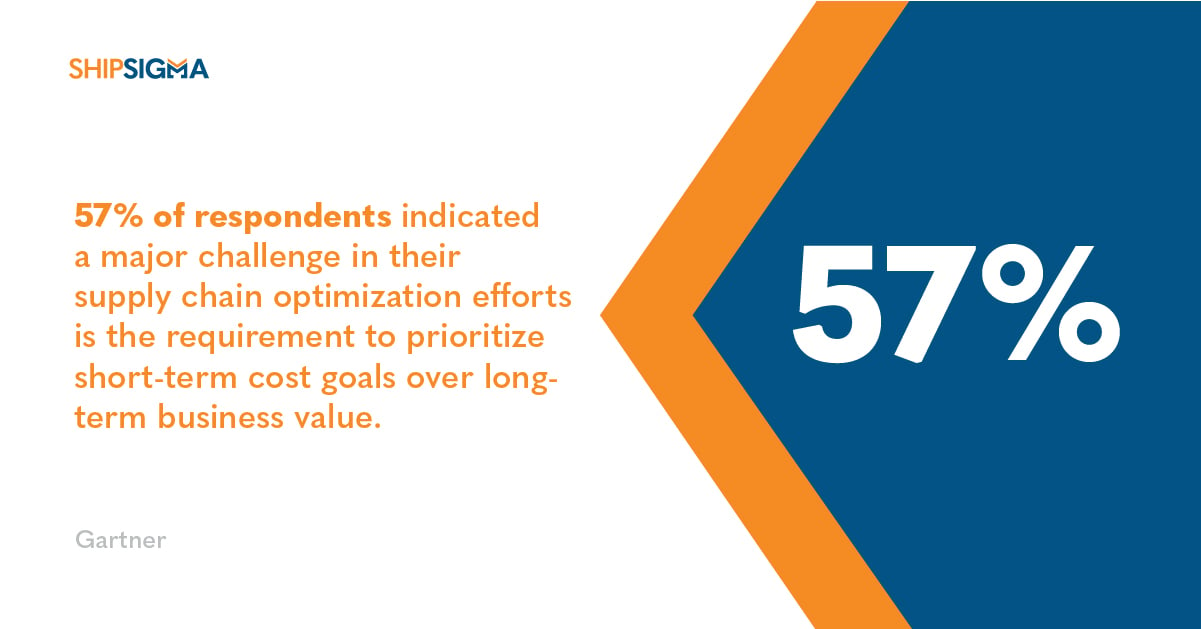Which Method is Used to Optimize the Transportation Cost?
May 24, 2022 •Chase Flashman

Getting products from point A to point B is a daily business requirement for companies in many industries. The more business relationships and customers a company has, the greater its need for shipping. Whether goods and documents are moving between business units or from the company to the customer, no shipper wants to pay more than necessary for this ever-growing expense. Everyone wants to tackle shipping optimization, track spending, and make the most of each dollar. ShipSigma is here to unpack the methods of optimizing shipping transportation cost, including parcel invoice audit services, contract negotiation with carriers, and insights and analytics tracking.
Elements of Transportation Cost in Logistics
Before we discuss how to optimize transportation cost, let’s define what elements cause these costs to be high or low.
- Packaging: If parcels are large or have unique dimensions like cylinders, they will cost more to ship. However, it is generally more cost effective to pack multiple items in one larger parcel if they are headed to the same destination. Sending multiple smaller parcels will cost more in the long run.
- Transport Method: Whether your parcel travels by air, land, or sea will impact its shipping cost and arrival timeline. Depending on the final destination of the parcel, it may be most cost effective to use more than one of these transport methods to get the job done. In fact, this automatically happens already. A parcel can travel most of the way by air, but it’s likely to reach the destination by road in a delivery truck.
- Timing of Shipment: If a parcel needs to be delivered quickly, this means higher costs for expedited shipping. When shipping at a high volume, how the parcels are delivered for transport can also drive efficiencies. There are many freight transportation model examples shippers use to manage outgoing shipments, including internal warehouse best practices and external collaboration such as finding other companies to share costs.
- Additional Shipping Surcharges: Additional charges in shipping can include fuel surcharges, limited access location fees, shipment correction or address change surcharges, return shipping fees, and more.
These elements of transportation cost can feel unavoidable. But in many cases, these can be opportunities to save money.
How Can Supply Chain Cost Be Reduced?
Research from Gartner has shown that most supply chain cost management is practical in scope. 57% of survey respondents indicated that their major challenge is the requirement to prioritize short-term cost goals over long-term business value. How can supply chain cost be reduced without minimizing value to the business over time? Here are the three strategies we underscore at ShipSigma.

Parcel Invoice Audit:
Did you know that as many as 66% of freight invoices may be inaccurate? These errors are just the beginning of the insights revealed by a parcel invoice audit. Our 50+ audit points include contract compliance, customer service performance by UPS or FedEx, third party fees, transit times, additional fees, peak delivery time charges, and many more. This lets you learn what avoidable and unavoidable factors of the market impacted your supply chain costs, while also pinpointing opportunities for more efficient processes.
Carrier Contract Negotiations:
Most of the time, the contract you have negotiated with UPS or FedEx is already pretty competitive for your industry. The analytics revealed by our platform empower customers to return to the negotiating table with advanced insights. These are opportunities to work with the carrier to achieve mutual benefit in areas like transportation cost, with the maximum cost-savings possible paid back to the shipper under the new contract terms.
Shipping Analytics and Insights:
Lastly, we believe in continuing to monitor your corner of the supply chain for what’s next and best. The analytics and insights of your day-to-day shipping might inform new administrative or operational processes in the warehouse. Maybe you identified the need for employee training in a key area. Overall, you will be able to integrate shipping cost saving solutions into your operations. Take small steps and measure the improvements in stages to ensure change isn’t happening too fast to manage!
What Helps In Reducing Total Logistics Cost? A Partnership With ShipSigma
You can’t reduce total logistics cost without a total, honest perspective on the state of your logistics. That’s where our parcel invoice audit is the jump start you need. Simply connecting our Sigma platform to your UPS or FedEx account is enough to reveal 2-7% cost savings. Leveraging our insights in a carrier contract negotiation, our customers save an average of 25.2%. And our proprietary dashboard helps you track cost savings down to the individual parcel. Plus, if there aren’t any cost savings revealed at all, you don’t pay to use the platform.

